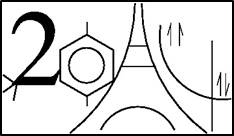The modification of metal oxide surfaces with organic moieties has been widely studied as a method of preparing organic-inorganic hybrid materials for various applications. Among inorganic oxides, the ion-exchangeable layered perovskites [1], materials composed by perovskite-like slabs and intercalated cations, stimulated authors' interest in reason of some encouraging electronic and reactive properties. In particular it is well known that the interlayer surface of such materials in their protonated form can be easily functionalized with organic groups (such as alcohols [2-3] or organophosphonic acids [4]) thus allowing the production of stable hybrid materials with new electronic and reactive features.
As a first step to design a new inorganic-organic hybrid proton conductor, a comprehensive theoretical investigation of the MLaNb2O7 (M=H, Li, Na, K, Rb and Cs) series of ion-exchangeable layered perovskite is presented. In particular, their structural and electronic properties have been investigated by periodic calculations in the framework of DFT. A general very good agreement with the available experimental data has been found. The protonated compound (HLaNb2O7) has been then functionalized with imidazole trying two different settings: in the first arrangement the molecule is adsorbed on the layered oxide exposing the interlayer surface, in the second the organic moiety is just put between two perovskites slabs. This latter model, including the effect of the confinement, allowed to better reproduce the experimental structural XRD data and 13C-NMR measurements of the hybrid system.
[1] Schaak, R. E. and Mallouk T. E., Chem. Mat. 2002, 14, 1455-1471.
[2] Takahashi S. et al., Inorg. Chem. 1995, 34, 5065-5069.
[3] Suzuki H. et al., Chem. Mater. 2003, 15, 636-641.
[4] Shimada, A. et al., Chem. Mat. 2009, 21, 4155-4162.
- Autre

 PDF version
PDF version
